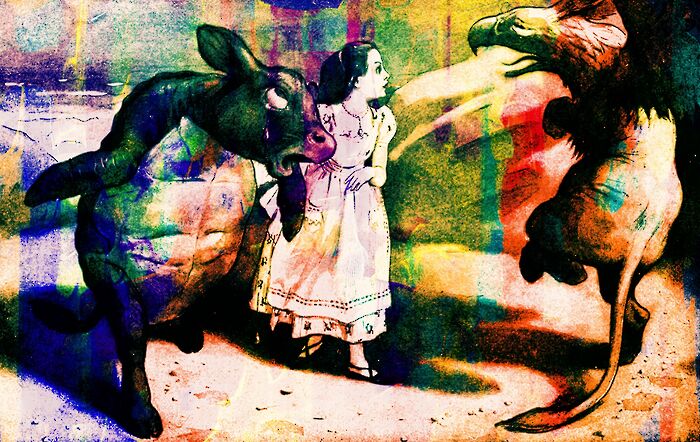Book-to-screen adaptations are about more than just ‘capturing the essence’
Ciara Dossett reviews the recent TV versions of The Handmaid’s Tale and Little Women, arguing why we need to stop judging adaptations on their closeness with the original novel

From the start of the twentieth century to today, televised adaptations of literary works have been notoriously popular with the public. We love to see what the stories would ‘look like’, but are often disappointed when it is different to our own imaginings. In almost every review of an adaptation there is a discussion of ‘how true this version is to the original’ - also known as fidelity criticism. Whilst interesting, comparison should not be the defining criterion for a successful adaptation.
"Fidelity criticism presents divergence as negative and devalues creativity."
We’ve all done it - felt personally attacked when one of our favourite novels is not depicted as we imagined. I would be lying if I said I wasn’t outraged by the changes to Laurie and Amy’s engagement scene in the recent BBC adaptation of Louisa May Alcott’s Little Women. I am certainly not alone either: numerous Little Women fans took to Twitter to point out other deviations from Alcott's beloved classic.
Realistically adaptations can never be exactly the same as the original. TV series and films have different requirements, most particularly fitting the book into a certain time frame. Storylines of older books are often edited to appeal to newer audiences: the recent version of Little Women left out many of the religious elements in order to appeal to a more secular audience. Reviews invoking fidelity criticism often talk about ‘capturing the essence’ of a novel, realising it can never be exactly as it was in the book. The same adaptation of Little Women was described by critics as having ‘captured’ the essence of Alcott’s original version. I too agreed with this assertion. But what does ‘capturing the essence’ of a book really mean?
Fidelity criticism presents divergence as negative and devalues creativity. Bruce Miller’s recent adaptation of Margaret Atwood’s The Handmaid’s Tale branched out from the original narrative. Atwood’s dystopian novel, in which she imagines a futuristic, totalitarian America in which certain women function as child carriers, is taken further by Miller, who makes the main character, Offred, more active. This could be controversial but for many, myself included, the changes to the original storyline were refreshing. Critics agreed, with The Handmaid’s Tale winning two Golden Globes at the recent awards ceremony.
Therein lies the problem. Fidelity criticism suggests there is only one correct reading of a novel when, in fact, everyone interprets stories differently. For many, Winona Ryder in the 1994 adaptation of Little Women is the ‘real Jo’, but for me Maya Thurman-Hawke in the 2017 adaptation was closer to the Jo I had always pictured. Who you think is the more authentic Jo entirely depends on your reading of the original text.
Unlike Alcott, Atwood is alive to see her book adapted and, in fact, approved of many of the changes, displaying the redundancy of using ‘the author’s original intent’ as a criterion for a successful adaptation. Remarking that “the Hulu team made their Offred more active than my Offred, partly because it’s a television series and partly because it’s an American television series,” Atwood acknowledged that films and TV series are likely to be more sensory and direct - if a TV series wants to run for seasons it can’t be as slow and passive as some books.
As George Bluestone commented in his pioneering 1957 book Novels into Films, the filmmaker is “not a translator for an established author, but a new author in his own right”. I loved Caswill’s adaptation of Little Women, which did not add anything to the original narrative. Equally, I was intrigued by the way Miller took his recent adaptation of The Handmaid’s Tale further than Atwood’s original novel. We should stop trying to decipher how ‘faithful’ an adaptation is to the original and judge it for what it is: a new piece of artistic work
 Interviews / You don’t need to peak at Cambridge, says Robin Harding31 December 2025
Interviews / You don’t need to peak at Cambridge, says Robin Harding31 December 2025 News / Unions protest handling of redundancies at Epidemiology Unit30 December 2025
News / Unions protest handling of redundancies at Epidemiology Unit30 December 2025 Comment / What happened to men at Cambridge?31 December 2025
Comment / What happened to men at Cambridge?31 December 2025 Features / ‘Treated like we’re incompetent’: ents officers on college micromanagement30 December 2025
Features / ‘Treated like we’re incompetent’: ents officers on college micromanagement30 December 2025 Theatre / We should be filming ADC productions31 December 2025
Theatre / We should be filming ADC productions31 December 2025









